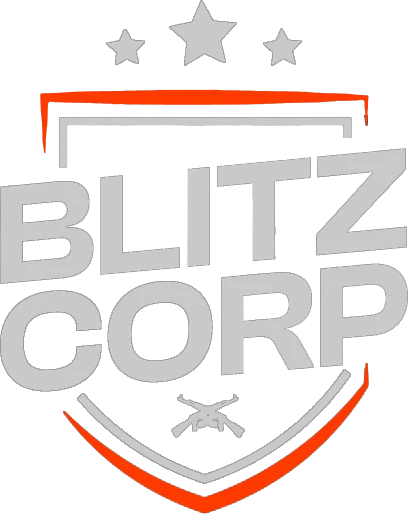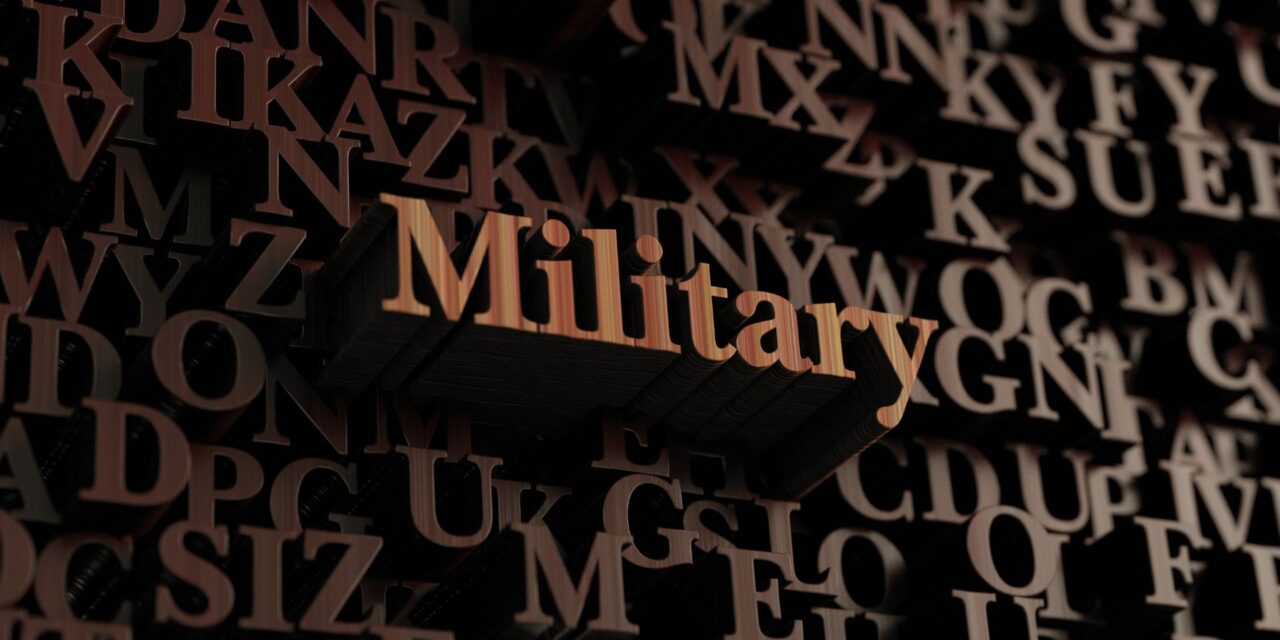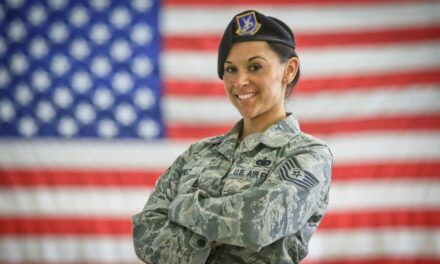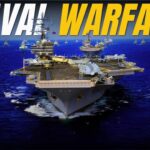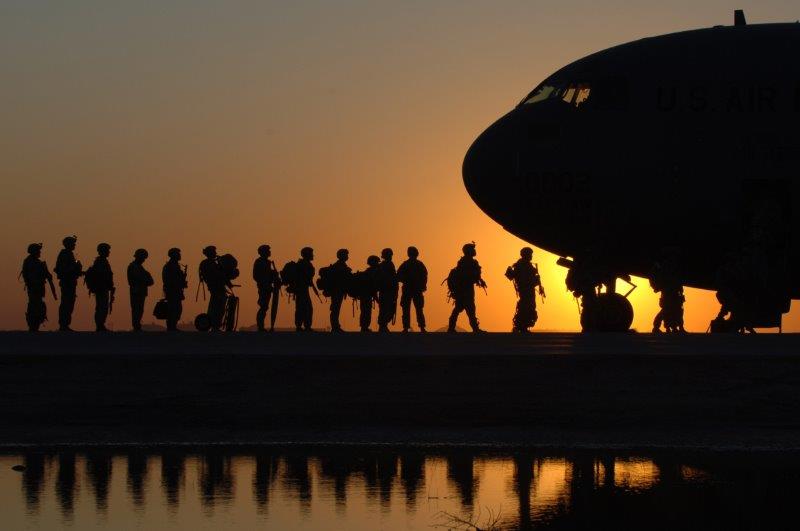Understanding military terminology is essential for properly comprehending the structure, operations, and culture of armed forces. From deciphering the military alphabet to unraveling complicated organizational hierarchies, familiarity with fundamental military terms enables clear communication and contextual comprehension.
This guide covers key categories of military vocabulary, including common acronyms, ranks, units, equipment, strategies, and life cycle terms ranging from recruitment to retirement. With informative tables and quotes sprinkled throughout, it aims to decode the complex lexicon permeating military language.
Key Takeaways
- Learning military terms facilitates effective communication, organizational clarity, and cultural understanding for civilians and service members alike.
- Key elements of military vocabulary include phonetic alphabets, acronyms, slang, ranks, units, equipment, operations, and career cycle terminology.
- Grasping terminology enables contextual comprehension of military structure, capabilities, strategies, and member experiences.
- Categorizing some of the most common terms provides a foundation for further learning.
The Importance of Learning Military Terms
Acquiring knowledge of military acronyms, military slang, military definitions, and an overall understanding of military terms is a fundamental aspect for anyone involved with defense operations. For military personnel, precise communication is more than aptitude—it's an operational requirement that ensures safety and strategic success, especially during high-tension scenarios. Civilians engaged in military affairs, from contractors to family members, can also greatly benefit from this specialized expertise, fostering better communication and appreciation for military culture and procedures.
Although military vernacular can seem insurmountable, many resources are available to aid in the education of these terms. From official training manuals to comprehensive online glossaries, one can develop fluency in military speak, which proves beneficial in various situations ranging from formal briefings to informal camaraderie amongst service members. Take these military style slang words for example:
| Military Slang | Definition |
|---|---|
| Bird | Referring to helicopters or aircraft |
| FNG (Friendly New Guy) | A nickname for newcomers to a unit |
| Rucksack | A military backpack |
| Scuttlebutt | Rumors or gossip |
| Grunt | Infantryman |
Understanding these acronyms and slang terms is vital for anyone looking to integrate themselves into military environments effectively. It not only streamlines communication but also enhances operational efficiency—a critical component in a field where every second counts.
"To err is human, but to really foul things up you need a computer." - Paul Ehrlich
This tongue-in-cheek observation applies to military communications as well. Even with advanced technologies at our disposal, the human element of understanding the lexicon can mean the difference between success and failure.
- Acquaintance with Military Acronyms
- Grasping Military Slang and Colloquialisms
- Navigating Military Jargon in Daily Use
- Enhancing Operational Efficiency
Whether you're reading a military manual or engaging with service members, a strong grasp of military terms enriches your interactions within this unique field.
Understanding military jargon is essential for properly comprehending armed forces communications, organizational hierarchies, job functions, and culture. Military terminology facilitates:
Effective Communication
Fluency in military terms enables clear transmittal and reception of critical information between senior leaders, field units, support teams, government civilians, and services members across all branches. The military even has its own form of time keeping that is key to effective communications in all aspects of armed forced operations. We cover military time thoroughly in our article designed for both experienced and new comers to this way of interpreting the 24 hour time clock.
Organizational Clarity
Familiarity with military vocabulary unveils the elaborate organizational structures dictating control, specialized units, areas of responsibility, and leadership hierarchies essential for coordinated operations.
Cultural Understanding
Military slang often reflects the experiences, challenges, and camaraderie characterizing service life. Grasping this terminology fosters better understanding and respect between civilians and members of the armed forces.
Simply put, comprehension unlocks contextual understanding that supports everything from diplomatic military relations to effective family advocacy for service members. While military vocabulary can seem overwhelming at first, recognizing some basic categories and most common terms establishes a foundation for broader learning.
Military Branches
Before diving into terminology, an overview of military branches provides helpful context. The United States Armed Forces constitutes the world’s largest military force charged with defending the country and its interests. It encompasses six branches:
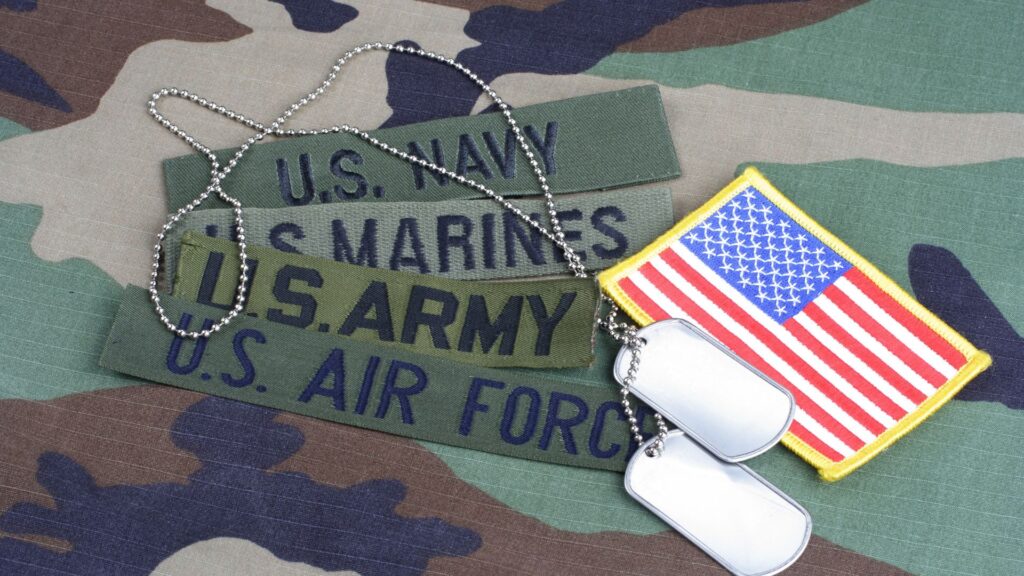
Army
The Army serves as the U.S. military’s main ground warfare branch tasked with protecting American land, assets, peoples, and interests. Army operations span everything from combat zones to humanitarian relief to tactical intelligence support for fellow services. Its members are soldiers organized under hierarchical chains of command.
"The basic mission for which the United States Army is organized, trained, and equipped is to provide prompt, sustained, land dominance across the full range of military operations and the spectrum of conflict in support of combatant commanders." - U.S. Army Doctrine
Navy
The maritime service branch responsible for naval warfare as well as protecting sea lanes, ports, coastal assets, and American national interests overseas. The Navy and its sailors maintain fleets of surface vessels and submarines supported by aviation units and coastal installations like ports and piers.
“A navy’s purpose is to project power ashore in order to influence events ashore for the purpose of advancing the nation’s vital interests.” - The U.S. Naval Institute
Marine Corps
A highly specialized amphibious infantry force equipped for rapid deployment by sea and air. Also called Marines or naval infantry, they serve as an elite fighting force with the inherent flexibility to operate across all domains from heavily populated coastal cities to remote landlocked regions.
“The Marine Corps has served as America's911 force—ready to respond first to a crisis anywhere in the world.” - Marine Corps Community Services site
Air Force
The aerial operations service charged with conducting air and space operations to defend American skies as well as provide combat power and support for land and naval campaigns. Its force of highly trained pilots, crew, and ground staff maintain fleets of advanced aircraft and satellites.
"The mission of the United States Air Force is to fly, fight and win...in air, space and cyberspace." – Air Force Vision Statement
Coast Guard
The maritime service branch operating on domestic and international waters. The Coast Guard protects America’s ports, waterways, coasts, and critical maritime infrastructure from threats like terrorism, human trafficking, drug smuggling, and environmental hazards.
“I am ready to lead the U.S. Coast Guard to continue confronting all threats and enemies, known and unknown, natural and man made.” — USCG Commandant Karl Schultz
This foundation sets the backdrop for better understanding common terminology. While Overlap and collaboration between branches does occur, comprehending core missions and domains lays groundwork to decode more specialized vocabularies.
Space Force
This less talked about but important branch of the military is used for conducting joint space operations across military, national, and commercial systems to deter threats and bolster U.S. space assets. Space Force roles span everything from space situational awareness and space launch to space-based satellite communications and navigation warfare.
Decoding the Military Alphabet: From Alpha to Zulu
Fluency in the military phonetic alphabet enables clear communications vital for success and safety of operations. It assigns code words to letters to reduce misinterpretation of letters and numbers shared during oral transmissions over communication channels prone to static, interference, sound distortion, and other auditory obstacles.
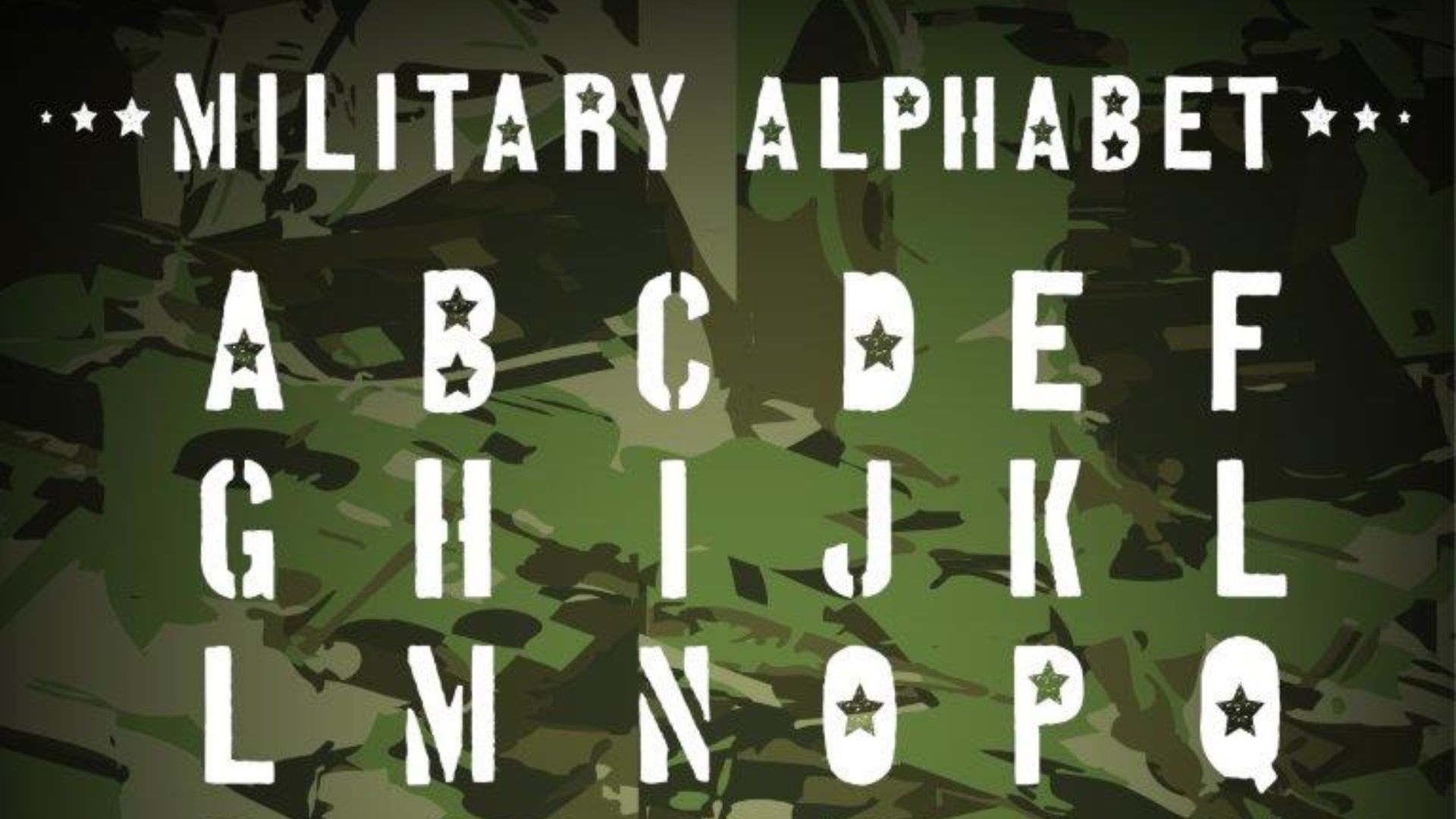
Understanding NATO Phonetic Alphabet
The North Atlantic Treaty Organization (NATO) phonetic alphabet serves as the most widely used and standardized system. It assigns a unique word to every letter of the English alphabet. Letters are selected to avoid similar sounding terms and ease non-native English speakers. For added distinction, code words only begin with the associated letter.
NATO Military Alphabet
| Letter | Code Word |
|---|---|
| A | Alpha |
| B | Bravo |
| C | Charlie |
| D | Delta |
| E | Echo |
| F | Foxtrot |
| G | Golf |
| H | Hotel |
| I | India |
| J | Juliett |
| K | Kilo |
| L | Lima |
| M | Mike |
| N | November |
| O | Oscar |
| P | Papa |
| Q | Quebec |
| R | Romeo |
| S | Sierra |
| T | Tango |
| U | Uniform |
| V | Victor |
| W | Whiskey |
| X | X-ray |
| Y | Yankee |
| Z | Zulu |
For example, the letter “B” becomes “Bravo,” “D” converts to “Delta,” and “F” changes to “Foxtrot.” This alphabet assigns unique words to avoid confusing similar sounding letters and numbers during transmission.
Applications in Military Operations
This standardized vocabulary facilitates communication accuracy regarding:
- Call Signs: Code names given to military units, bases, headquarters, specific airmen, or soldiers
- Coordinates: Identifying grid references when reading maps or plotting locations
- Equipment IDs: Referencing vehicles, weapons, or other assets
- Conditions: Describing difficult scenarios, emergencies, or status reports
- Radio Communications: Clear transmittal of messages in difficult auditory environments
Consider how “Operation Red Wing” or “Forward Operating Base Tango” or “Rally Point Zulu” improves clarity. While modern technologies continue improving communications, mastery of this phonetic alphabet remains essential across military branches, joint operations, multinational coalitions, and field environments straining transmission integrity.
The World of Acronyms: Deciphering Military Speak
Beyond phonetic languages, familiarity with military alphabet soup empowers civilians and service members alike to decode the elaborate world of armed forces communications and operations.
These abbreviations enable quick, clear transferal of complex terms and titles across written reports, verbal briefings, military symbols, equipment nomenclature, and radio transmissions.
Did you know: The earliest known example of modern military abbreviations dates back to WWII - the famous "Kilroy was here" graffiti! It originated from a ship inspector named James Kilroy marking tanks he cleared with "KILROY WAS HERE" doodles, which later spread virally across bases and battlezones as soldiers adoped the meme.
While hundreds exist, some acronyms become so engrained they operate almost as words themselves. Learning the most common examples provides building blocks for disentangling the elaborate world of military acronyms:
- DD-214: Discharge papers and separation documents provided when members retire or otherwise leave active duty military service
- DFAC: Dining facility located on military bases offering food services to military members
- MRE: Meal Ready to Eat, containing prepackaged field rations
- PCS: Permanent change of station; officially transferring a service member to a different duty location
- PTSD: Post-traumatic stress disorder
- OPSEC: Operations security; institutionalized procedures protecting critical information deemed mission sensitive
- MOS: Military occupational specialty; a service member’s particular job within their designated branch
- DOD: Department of Defense
- GI Bill: Government education benefits for active duty and veterans
Additionally, recognition of category specific acronyms also simplifies comprehension:
Common Acronyms by Military Branch
| Branch | Acronym Samples |
|---|---|
| Army | ASAP - As Soon As Possible CONUS - Continental United States NCO - Non-commissioned Officer TOC - Tactical Operations Center |
| Navy | NAV – Navy OPAREA - Operating Area PACOM - Pacific Command COMNAVSURFPAC - Commander, Naval Surface Forces Pacific |
| Marine Corps | GCE - Ground Combat Element LAR - Light Armored Reconnaissance MARSOC - Marine Special Operations Command MEF - Marine Expeditionary Force |
| Air Force | AEF - Air Expeditionary Force AETC - Air Education Training Command CRC - Control and Reporting Center RED HORSE - Rapid Engineer Deployable Heavy Operational Repair Squadron Engineers |
| Coast Guard | AOR - Area of Responsibility DSF - Domestic Security Function MLE - Maritime Law Enforcement MSST - Maritime Safety and Security Teams |
Context remains king when deciphering novel terms. But pattern recognition empowers intuitive guesswork. For example, Highway 101means a physical road to civilians while Military Highway 101 references established procedures for military operations. Similarly, familiarity with category conventions helps unravel unfamiliar branch specific terms.
With so many obscure abbreviations and acronyms permeating military communications, mastery remains challenging even for career service members. But core awareness unravels broader meaning hidden within terminology.
Military Nicknames and Slang: Culture Behind the Terms
Beyond technical terms, military vocabulary brims with colorful nicknames and slang terms reflecting cultural experiences. While terminology evolves across generations, learning samples provides windows into lifestyle realities and camaraderie characterizing armed forces communities.

Colorful Expressions Unique to the Service Branches
Imaginative nicknames referencing equipment, locations, and operations reveal creative humor alleviating challenging military lifestyles:
Military Branch Nickname Examples
| Branch | Nickname Samples |
|---|---|
| Army | Grunt (Infantryman) POG - Person Other than Grunt (Non-combat personnel) Devil Dog - Fierce, tenacious fighter Foxhole - Protective fighting positions |
| Navy | Blue Water Navy - Open ocean operational forces Brown Water Navy - Lakes, rivers, and coastal operational forces Squid - Slang for sailor Seabee - Naval Construction Battalions personnel |
| Marine Corps | Jarhead - Military regulation "high and tight" haircut Sand Flea - Derogatory for lower disciplined Marine Puddle Pirate - Mockery by other services over maritime focus |
| Air Force | Flyboys and Jet Jockeys - Cocky fighter pilots Zoo Crew - Ground operational support personnel TACP - Tactical Air Control Party directing combat air support |
| Coast Guard | Puddle Jumpers - Small boat crews Coasties - Nickname for Coast Guard service members Bouy Tenders - Vessels maintaining navigation markers |
These nicknames showcase inter-service rivalry alongside the unique culture underpinning shared identities and experiences binding members to their branch through lighthearted humor.
How Slang Reflects Military Life and Camaraderie
Similarly, military slang contains colorful phrases reflecting lifestyle challenges, realities, and humor. Some samples:
- Make a hole! - "Get out of the way!" in crowded corridors
- Embrace the suck - Accepting unavoidable misery
- Blue falcon - Buddy betraying friend; imagery of backstabbing talons reminiscent of battle emblem
- Standby to standby - "Hurry up and wait" duty punctuated by long empty pauses
- Check your six - "Watch out behind you" spotting attacks from rear position
- No impact, no idea - "Fog of war" confusion amidst chaos
This "trench humor" builds solidarity coping with stressful, dangerous situations while allowing informal emotional venting. Trading "sea stories" allows cathartic sharing of frustrations mirroring grassroots groups like Alcoholics Anonymous. Further, such vocabulary conveys respect missing from dismissive civilian interactions facing widespread military societal divides.
Learning slang enables better understanding of military perspectives. Simultaneously, concepts like embodying a “behoove” attitude signal responsibility and discipline contrasting civilian contexts. Ultimately, comprehensively combing acronyms, slang, and cultural nicknames enables nuanced insight into service member realities.
Structural Organization: Understanding Military Ranks
Hierarchical ranking defines the organizational superstructure clarifying leadership authority, operational control, and administrative accountability across military branches. This system enables unified chains-of-command facilitating coordinated strategies between massive formations.
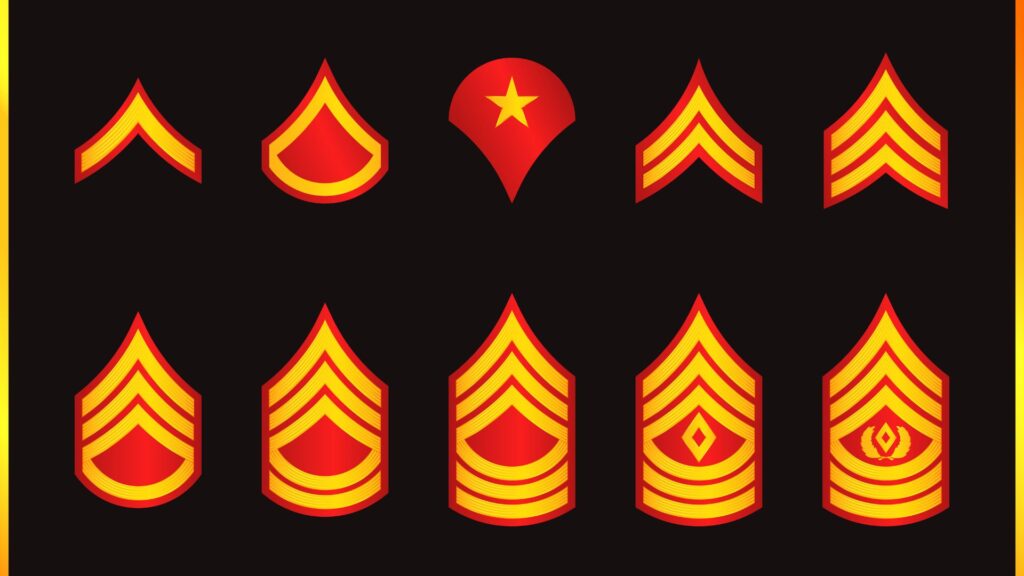
While classification schemas,pay grades,and ceremonial orders differ between service branches, common terminology helps interpret authority across:
Enlisted
Enlisted refers to entry level ranks joined under contractual service for set durations spanning 2 to 6 years. Performing occupational specialties, they comprise over 80% of the armed services workforce operating equipment, vehicles, electronics, mechanics, infantry units, and various support roles.
Promotions through successive tiers signals merit and experience enabling advanced responsibilities per associated pay grades. However,enlisted never hold an official commission warranting officer status.
Army and Marine Enlisted (Junior-Senior)
Private – Private 1st Class – Lance Corporal – Corporal – Sergeant – Staff Sergeant - Gunnery Sergeant - Master Sergeant - Sergeant Major - Sergeant Major of the Army
Navy and Coast Guard Enlisted
Seaman Recruit - Seaman - Seaman Apprentice - Seaman - Petty Officer 3rd Class - Petty Officer 2nd Class - Petty Officer 1st Class - Chief Petty Officer – Senior Chief Petty Officer – Master Chief Petty Officer - Master Chief Petty Officer of the Navy
Air Force Enlisted
Airman Basic - Airman - Airman 1st Class - Senior Airman - Staff Sergeant - Technical Sergeant - Master Sergeant - Senior Master Sergeant - Chief Master Sergeant - Command Chief Master Sergeant
Non-commissioned Officers
A distinction reserved for higher ranked enlisted reaching senior NCO status through experience and expertise. Preparing for officer-equivalent leadership roles, they train, manage, instruct, assign, and supervise subordinate enlisted personnel.
Esteemed for subject mastery and operational command influence, they provide continuity of operations, mentorship, and discipline across forces despite lack of formal commission.
“The marine NCO is the sinew and fiber of Our Corps, bonded together in a sacred covenant of loyalty, courage and commitment to which each of us solemnly pledged “without mental reservation or purpose of evasion.” He walks in the footsteps of legendary NCO war fighters, standing in the shadows of McVay, Malvesti, Basilone, and Leatherneck magazine’s Infantry Squad Leader of the Year.” - General James T. Conway on Non-Commissioned Officers
Warrant Officers
A unique rank occupying a niche between enlisted grades and commissioned officers. Requiring extensive tactical experience, Warrant Officers receive Presidential commissions providing authority for specialized technical roles ranging from intelligence analysis to piloting helicopters.
Less than 5% of personnel achieve this selective status by proving mastery over equipment, processes, or systems too expensive or dangerous to delegate to non-specialists. They lead and instruct with narrow focus and autonomy but less prestige than traditional commissioned officers.
Commissioned Officers
The highest formal authority within military chains-of-command. Attaining prestigious officer status requires a four-year college degree at minimum prior to commissioning ceremonies authorizing legal leadership.
Rising through successive ranks denotes growing experience, knowledge, responsibility, and pay grades qualifying oversight over specialized units and entire installations.
Commissioned Officer Rank Hierarchy
Second Lieutenant (O-1) → First Lieutenant (O-2) → Captain (O-3) → Major (O-4) → Lieutenant Colonel (O-5) → Colonel (O-6) → Brigadier General (O-7) → Major General (O-8) → Lieutenant General (O-9) → General (O-10)
Commissioned Officers hold direct authority over Enlisted personnel and implement overarching strategy directives from General Staff. However, they remain bound by oath to foundational service decrees like the Uniform Code of Military Justice.
General Officers
The peak of the military rankings pyramid reserved for a tiny fraction of senior Colonels and Generals. These highest-ranking Commissioned Officers oversee enormous formations, vast regions, critical operations, and weighty policy decisions.
While less than 1% of Officers achieve this pinnacle “brass” authority, their vision and direction affects millions of personnel and steers the entire military hierarchy.
“The power and direction of the entire hierarchy flows downward from the Chief Commander. His supporting staff channels his orders toward tactical implementation. This mission command is what enables success.” – General Stanley McChrystal, leader of Joint Special Operations Command (JSOC) counter-terrorism task force
This foundational ranking architecture supports coordinated chains delivering leadership cues guiding millions of warfighters and assets across air, land
Military Unit Terms
Beyond individual ranks, organizational terminology also helps decode the military’s elaborate structural hierarchy. Standardized unit types facilitate scalable formations between small teams and enormous divisions composed of thousands of personnel.
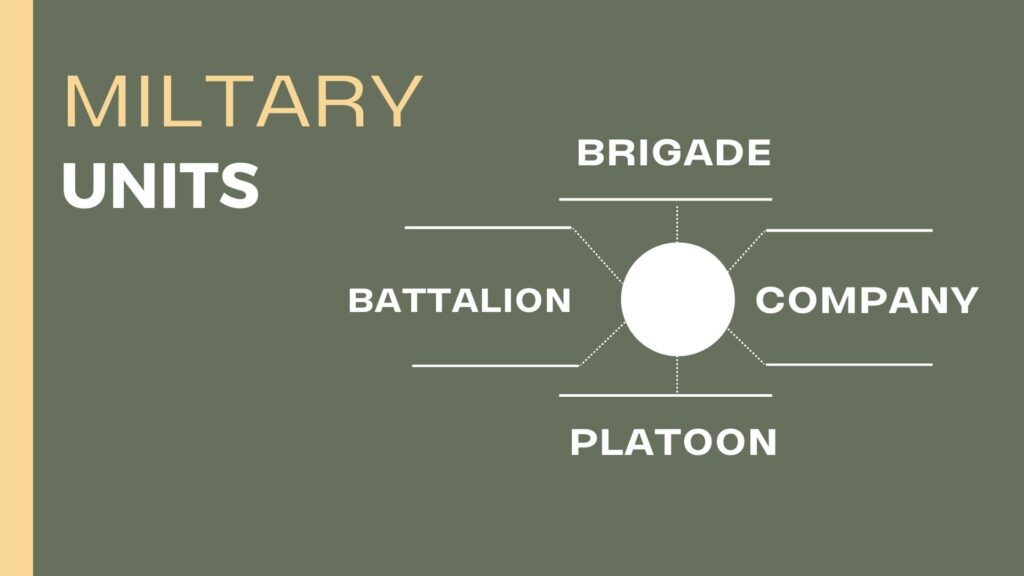
While unit sizes fluctuate based on operational requirements and branch protocols, comprehension empowers contextual understanding of capabilities, leadership structures, and jurisdiction.
Platoon
The smallest official military unit led by a commissioned officer. Usually containing 16-50 soldiers or marines, platoons represent ground force building blocks conducting patrols, reconnaissance, support, and specialized missions. They contain 2-4 squads led by senior NCOs.
"The platoon is the lowest level at which the fundamental tactics of infantry combat are practiced." - GlobalSecurity.org
Company
3-4 platoons consolidated under the command of a Captain. Comprising 80-225 personnel, companies operate semi-independently as integrated teams capable of tactical deployment, transport, mobility, and unit integrity. Additional staff roles like Executive Officers and First Sergeants provide auxiliary assistance and oversight.
Companies also represent aviation squadron and naval fleet organizational elements between crews and battalions. This versatility enables customization across branches and operations.
Battalion
A mid-sized unit of ground and air forces containing 300 to 1,200 members. Led by Lieutenant Colonels, battalions integrate capabilities across rifle, surveillance, air defense, and forward support companies combined under the same command. This synchronization provides operational agility, concentrated firepower, and support continuity leveraging multiple skill sets.
Brigade
A sizable regimental formation with around 3,000 to 5,000 personnel. Brigades represent combined arms tactical units with various organic elements like infantry, armor, artillery, air defense, logistics, communications, and reconnaissance forces consolidated under one centralized Colonel’s command.
Did you know: The smallest Army unit is a two-man fireteam? This buddy team constitutes the fundamental building block providing tactical cohesion, security, effective fields of fire, and flexibility clearing buildings in close urban combat.
Regiment
The first permutation where multiple battalions/squadrons combine into a unified branch-specific combat arm. Numbering over 1,000 members, traditional infantry regiments contain specialized units like foot soldiers, armored cavalry, army aviation, combat engineers, military intelligence, military police, communications, and chemical warfare services.
Within modern mechanized warfare, regiments provide scalability between limited battalions and vast divisions. Customizable formations enable tailoring battalion quantities and diversity to required capabilities.
Division
The largest military formation with 10,000-18,000 soldiers. Commanded by Major Generals, divisions integrate various combat arms regiments alongside several supporting brigades supplying vital sustainment elements.
This diversification allows self-contained deployability containing most assets necessary for autonomous operations. Integrated air assets may include attack helicopters, unmanned aerial vehicles (UAVs), and electronic warfare elements. We go over some of some of the most futuristic UAV's and how even first responders are using them to save lives.
Squadron
Aerial equivalents to ground battalions within the Air Force and Marine Corps. Numbering over 1,000 personnel, squadrons operate aircraft groups fulfilling specialized functions like fighter jets, bombers, airlift support, refueling tankers, air defense systems, surveillance crafts, helicopter transports, and other aviation platforms.
Led by Lieutenant Colonels, they represent fundamental air combat units operating, arming, maintaining, and supporting assigned air wings under centralized regiments known as Marine Aircraft Groups and Air Force Fighter Wings.
Understanding these unit sizes and terminology unveils organizational structures and capabilities serving joint operations between services.
| Unit Type | Size | Commanded By | Function |
|---|---|---|---|
| Platoon | 16-44 Soldiers | Lieutenant | Combat or support missions within a company. |
| Company | 100-200 Soldiers | Captain | Multiple platoons operating collectively for administrative efficiency and independent tasks. |
| Battalion | Several Companies | Lieutenant Colonel | Undertaking operational tasks and temporary assignments. |
| Brigade | Several Battalions | Brigadier General or Colonel | Sustaining extensive combat operations, military training, and defensive structures. |
| Regiment | 2-3 Battalions | Colonel | Traditionally essential for combat roles within military defensive structures. |
| Division | Multiple Brigades/Regiments | Major General | Major tactical operations and sustained battlefield engagement. |
| Squadron | Varies (Aircraft/Ships) | Varies | Principal combat unit for aerial or naval missions. |
Communication on the Field: Tactical Terms and Protocols
Beyond phonetic alphabets and obscure acronyms, military personnel utilize precise protocols and codes enabling efficient communication amidst the complex challenges of combat environments.
Common Tactical Communication Codes
| Term | Meaning |
|---|---|
| Roger | Message received or instruction understood |
| Squawk | Transmit IFF code enabling air traffic identification |
| Flash | Precedence label for immediate critical message delivery |
| Five by Five | Good signal strength and clarity. Feedback about the quality of communication link. |
| Broken Arrow | Code indicating accidental warhead or nuclear weapon detonation signal distress requiring immediate support |
| Mayday | International radio distress signal |
| Foxtrot | Last transmission received poorly requiring repeated resend |
| Wilco | Will Comply. A step further than Roger, not only acknowledging but also confirming that the order will be executed. |
| Standby | Message recipient requests transmission pause for situational reasons |
| Lima Charlie | Loud and Clear. Confirmation that a message has been received and understood. |
Strict radio operations security shields friendly positions by concealing transmit locations through limiting duration, distribution, and content references. Brevity enables efficient relay by simplifying messages down to essential details using succinct standard terminology and omitting trivial informal exchanges.
While modern technology expands possibilities, disciplined authentication, encryption protocols, and electronic security hardening protects critical communications and intelligence against interception. Ultimately effective protocols balance efficient content with prudent protections so messages reach intended recipients intact.
Military Operations Terms
Beyond organizational structures and communication procedures, mission execution hinges on coordination vocabulary standardizing requests, statuses, movements, maneuvers, implements, phases, and results during operations. Familiarization promotes contextual comprehension between civilian policy makers, operators in the field, support teams, and inter-forces collaborators.

Deploy
Mobilize military units to another region or country per assigned duties and missions. Deployment encompasses transporting personnel and equipment alongside logistical planning regarding provisions, communications, staging points, and tactical objectives.
Mobilize
Rapidly assemble, equip, and organize troops in response to orders or emergent circumstances. Mobilization encompasses recalling reserve forces, establishing supply lines, determining deployment destinations per strategic priorities, assigning contingency resources, and hardening communications infrastructure.
Patrol
Assigned teams surveying designated zones gathering field intelligence and investigating enemy presence while securing terrain. Patrols emphasize avoiding detection through stealth, caution, limited engagements, and concealment.
Reconnaissance
Seeking vital intelligence on enemy forces, defenses, movements, and capabilities enabling operational leaders to exploit adversaries. Recon emphasizes speed and discretion when assessing vulnerabilities undetectable by technological sensors.
Surveillance
The systematic observation of aerospace, surface, or subsurface zones facilitating prompt detection of time-sensitive intelligence material and activities. Surveillance utilizes technological sensors, data links, visual monitoring, and analytical tools to maintain consistent oversight through visual, auditory, photographic, infrared, and electronic mediums.
Raid
Swift attacks on targets of opportunity prioritizing focused destruction, information gathering, and resource extraction over territory seizure. Raid forces emphasize mobility, flexibility, and self-contained operations to avoid decisive commitment or clashes compromising unit integrity.
Sortie
Operational flight evolution where one aircraft performs an aerial mission uninterrupted by landing. Military aviation counts operational statistics by compiled air sorties reflecting reach, tempo, efficiency, and workload handled by air wings. This becomes the ultimate measure of real aerial missions regardless of unrelated training runs.
Weapons and Equipment: Identifying the Hardware
Mission success depends on operational mastery over assigned weapons systems and assets tailored to specialized roles. Comprehension of capabilities remains mandatory for strategists allocating limited tools optimally while minimizing resource redundancy or coverage gaps.
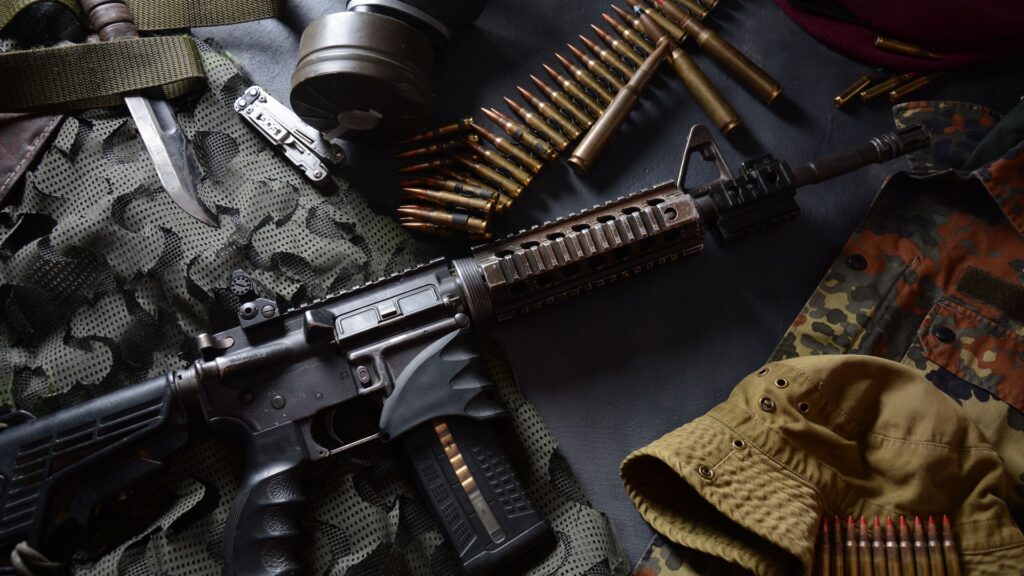
Differentiating Between Firearms and Explosives
| Term | Description |
|---|---|
| Magazine | A container storing ammunition feeding repeating firearms |
| Clip | A device bending rounds for improved loading into internal magazines |
| Suppressor | A muzzle attachment dampening explosive sound signatures |
| Casing | Metal housing containing propellant and primer of small/medium arms ammunition |
| Shell | Complete round with explosives contained by casing projectiles like artillery |
| Grenade | Small timed explosive weapon thrown by hand |
| Warhead | Detonating payload mounted on rockets, missiles, torpedoes |
| Black Powder | Original propellant explosive compound predating Smokeless powder |
| Pyrotechnics | Explosive preparations designed for illumination, signaling, or marking |
Tanks
Heavily armored tracked combat vehicles dominating land warfare through superior firepower and shock action. Modern main battle tanks deploy thick composite protections, sensors, smoke screens, target tracking electronics, and mounted machine guns alongside primary smooth bore cannons firing anti-tank rounds and high explosive shells.
Common Tank Models
| Nation | Tank | Description |
|---|---|---|
| U.S. | M1 Abrams | Heavily armored mobile land weapon system named after General Creighton Abrams |
| Russia | T-90MS Tagil | Advanced 3rd generation Russian tank variant introduced in early 2020s |
| China | Type 99 | Heavily modified unreliable derivative of Soviet T-72 sold to Pakistan |
Artillery
Ground weapons systems firing explosive munitions along high arching indirect trajectories at targets beyond line of sight. Modern self-propelled models enable turreted mobility and armored protection alongside automated targeting and radar-assisted tracking to barrage distant positions with great accuracy using fewer rounds.
Common Artillery Systems
| Nation | System | Description | Caliber |
|---|---|---|---|
| U.S. | M777 Howitzer | Lightweight towed gun highly transportable by helicopters | 155mm |
| Russia | 2S19 Msta | Tracked medium self-propelled howitzer | 152mm |
| China | PLZ-05 | Chinese self-propelled howitzer similar to U.S. Paladin | 155mm |
“Modern technology has made artillery King of Battle once again after almost a century of decline.” - General Michael Vane, British Army
Fighter Jets
Fixed wing tactical aircraft conducting air interception and ground attack operations. Fighters emphasize speed, maneuverability, avionics systems, and air-to-air weaponry to establish localized air superiority enabling broader mission success. They execute tactical bombing, provide close air support, escort bombers, conduct intercepts, gather intelligence, strike strategic targets, and perform reconnaissance.
Role Based Fighter Jets
| Type | Sample Models | Description |
|---|---|---|
| Air Superiority | F-15 Eagle Su-35 Flanker J-20 | Specialized dogfighting aircrafts prioritizing aerial combat through performance and missile capabilities |
| Multi role | F/A-18 Hornet F-16 Falcon Su-30 | Balanced aircraft capable of air-to-air and air-to-ground operations |
| Interceptors | MiG-31 Foxhound Su-27 Flanker | Heavily armed defense fighters guarding airspace against hostile penetrations |
| Attack | A-10 "Warthog" Su-25 Frogfoot | Heavily armored crafts providing close air support for ground forces |
These represent several categories of fighters fulfilling niche capabilities that strategists combine for massed effectiveness. This model parallels multi role naval “carriers” transporting specialized “strikers” project power beyond horizons. Check here to learn how Chinese fighter jets have recently become a real thread to global security.
“The destructive ability of the bomber is a function of the accuracy with which he can locate his target.” – General of the Air Force Henry “Hap” Arnold, US Army Air Forces Commander
Transport Ships
Naval auxiliary vessels supporting military mobility and logistics by conveying equipment, vehicles, cargo, troops, and supplies over water. While lacking firepower of warships, their cargo capacity enables force projection through rapid transportation protected by armed escorts. Our video details some of the Navy's most powerful ships.
Common Transport Models
| Class | Description |
|---|---|
| Supertankers | Enormous oil tankers converted to carry entire armored divisions’ heavy vehicles across oceans |
| Landing Crafts | Shallow transports with bow doors enabling beach landings and river operations |
| Roll-On/Roll-Off (RO/RO) | Ships carrying vehicles via internal ramps between decks |
| Fast Sealift Vessels | Quick streamlined hulls for rapid intercontinental transits |
| Afloat Forward Staging Bases | Modified vessels supporting aviation assets and special operations |
Submarines
Hidden naval vessels leveraging stealth, sensors, and weapons to covertly locate and destroy enemy ships or deny access to contested regions. Attack submarines rely on torpedoes, missiles, mines, and onboard SEAL delivery capacity while ballistic submarines represent underwater nuclear deterrence through continuum assured second strike capability concealed by oceans. Check out our video show the most powerful battle submarines in the world.
Heavyweight Torpedo Armament
| Nation | Model | Range | Speed | Payload | Guidance |
|---|---|---|---|---|---|
| U.S. | Mk 48 ADCAP | 30+ miles | 50+ knots | 650 lb PBXN-103 | Wire guidance, acoustic homing, sonar |
| Russia | Type 65-76A | 21+ miles | 50+ knots | 1,100 lb APR-3E | Wake homing, active/passive sonar |
| China | Yu-6 | 15+ miles | 45 knots | 1,100 lb shaped charge | Wire guidance |
Helicopters
Vertical takeoff and landing (VTOL) aircraft providing speed, agility and versatile employment scenarios ranging from reconnaissance and infiltration to cargo transport and close combat support. Twin turboshaft engines drive a main and tail rotor enabling nimble navigating through tight land and sea environments. We break down some of the most advanced military helicopters here.
Role Based Helicopter Models
| Type | Samples | Description |
|---|---|---|
| Attack | AH-64 Apache Mi-24 Hind | Heavily armed gunships providing close air support with rockets, missiles and cannons |
| Maritime | SH-60 Seahawk Ka-27 Helix | Multi role naval helicopters conducting over the horizon targeting, sea surveillance, anti-sub and anti-ship operations |
| Transport | UH-60 Black Hawk Mi-17 Hip | Twin-engine tactical transports delivering troops and internal cargo under sling loads |
In addition to these platforms, several unmanned aerial systems expand remote observation, sensing, targeting, mapping, and battlefield coordination without hazarding flight crews. Their capabilities continue growing alongside missile systems, stealth improvements, augmented sensors, AI-assisted targeting, and hardened communications against jamming. Staying abreast of such advancements often provides the marginal asymmetric advantages deciding clashes between competing powers. We break military vehicles down even further in this article on our website.
The Language of Strategy: Operational Planning Terms
Beyond weapons specifics, truly comprehending modern warfare requires insight into abstract operational concepts and terminology guiding practical employment behind front lines. Doctrinal evolution continually integrates lessons from wars, strategy luminaries, and technology innovation transforming battle spaces.
**Key Modern Strategic Concepts **
| Term | Definition |
|---|---|
| Active Defense | Proactive posture combining aggressive localized offensive action with overall strategic restraint geared towards de-escalation |
| Multi-Domain Operations | Synchronized employment of capabilities in land, sea, air, space, and cyber domains to open windows of advantage |
| Distributed Maritime Operations | Dispersed fleet reducing adversaries target density while collecting broader offensive mass on demand |
| Force Multiplication | A strategy to increase the striking power without increasing the number of troops or machines. |
| Mission Command | Assigning elite forces clearly defined strategic missions for creatively determining optimal tactics with operational initiative |
| Interdiction | Conducted to divert, disrupt, delay, or destroy the enemy's military potential before it can be brought to bear effectively against friendly forces. |
| Decapitation Strike | Aimed at removing the leadership or command nodes to cause disarray in enemy ranks. |
| Area Denial | Preventing an adversary from occupying or traversing an area of interest. |
Leadership vision translates such doctrines into directives steering coordination across thousands of assets and personnel. This determines success even with ideal tools.
“The supreme excellence is not winning 100 victories in 100 battles. The supreme excellence lies in defeating the enemy without fighting.” – Sun Tzu, The Art of War
Lifecycle of Service: Terms from Enlistment to Discharge
Beyond job titles and hardware tools, the military constitutes a lifestyle defined by cycles of recruitment, basic training, specialization, duty stations, deployments, family separations, injuries, decorations, retirement, and transition. Terminology navigating these phases helps contextualize experiences.
Recruitment and Basic Training Vocabulary
Enlistment - Voluntary entry into active duty military service through a contractual obligation
ASVAB - Armed Services Vocational Aptitude Battery (test determining specialization)
MOS - Military Occupational Specialty (job assignments)
DD Form 4 - Military contract enlistment paperwork
Basic Training - Intensive instruction course introducing military structure, standards, protocols and skills
Drill Instructors - Senior NCOs training junior enlisted recruits
Boot Camp - Nickname for rigorous basic training regimens
TAPS - Morse code bugle call signal marking end of each duty day
This initial orientation transforms civilians into obedient uniformity as military inculcation replaces individuality with strict conformity.
Common Terms Associated with Military Retirement and Discharge
- ETS – Expiration Term of Service; conclusion of involuntary term of enlistment
- Retire – Conclude decades of military career through pension benefits and separation
- General Discharge – Administrative separation without fulfilling service contracts
- Dishonorable Discharge – Severance for serious offenses usually forfeiting benefits
- Section 8 – Military mental health discharge
- DD-214 – Certificate of Release offering certified credentials, benefits access, and discharge documentation
- DEP - Delayed Entry Program. Allows enlistees to delay entry into active duty
Understanding this lexicon helps civilians relate to transitioning service members reintegrating into society.
Geographical Military Terms: Reading Maps and Navigating Terrain
Mission success depends on spatial awareness and navigational mastery essential for strategic mobility. Tactical execution requires fluency in geography, elevation formats, reference systems, obstacles, avenues, markers, networks, grids, and positions.
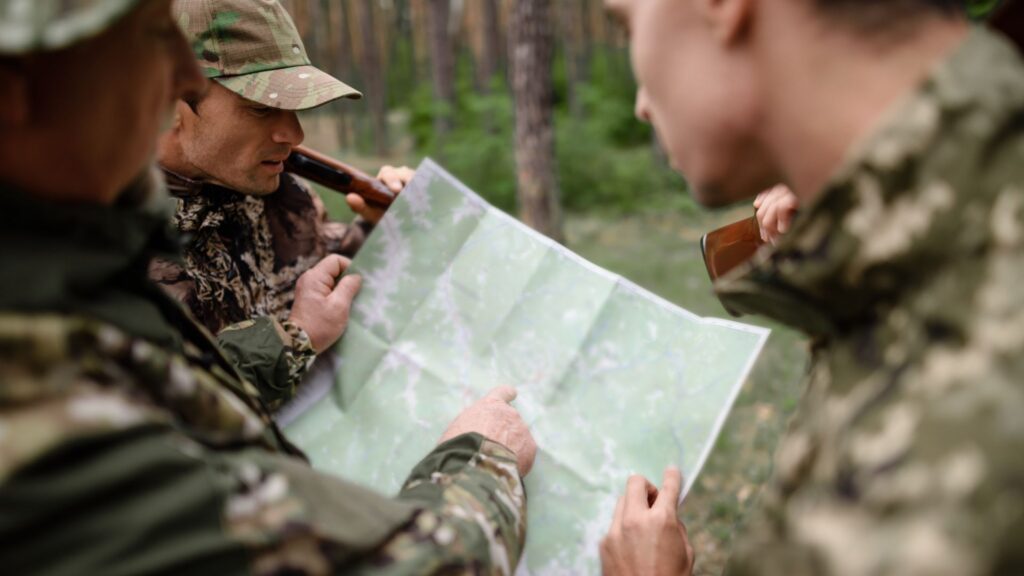
Key Geospatial Vocabulary
| Term | Definition |
|---|---|
| Topography | Surface landscape features characterizing natural or manmade terrain |
| Gradient | Standardized degree measure of sloped elevation changes |
| Longitude | Imaginary north-south lines dividing earth surface |
| Latitude | Horizontal east-west lines segmenting the globe |
| Cardinal Directions | Standard compass readings (N, S, E, W) |
| Waypoint | Reference coordinates for charting navigational courses |
| Firebreak | Barrier zones limiting wildfire spread |
| Defilade | Protection from observation or direct fire behind concealing features |
Additionally, global militaries divide earth into gridded reference systems
Medical and First Aid: Terms for Health and Emergencies
Militaries require institutional health systems caring for “Tip of the Spear” warfighters while maintaining 1 million active duty service members and veterans population pools. Familiarity with common medical terms and acronyms empowers advocacy.
Triage and Medical Evacuation: Understanding the Lingo
Triage - Prioritization and assignments of treatment urgency levels among influxes of patients
CasEvac - Casualty Evacuation conveying injured personnel from combat zones to regional stabilization points
MedEvac - Medical Evacuations transporting urgent trauma cases off theaters to national treatment centers
Forward Surgical Teams - Highly mobile units stabilizing injuries through rapid surgeries near front lines
Golden Hour - Critical treatment window impacting mortality outcomes
Casevac - Urgent tactical casualty evacuations from points of injury to stabilization sites
Hippocratic Oath - Ethical maxim of medical professionals to “do no harm”
Did you know: Battlefield medicine has catalyzed civilian healthcare innovations? Beyond pioneering trauma response systems, wartime necessities birthed medical advances like GPS telemetry, ultrasound, penicillin production, skin grafts, prosthetics, blood banking, and ambulance services later standardizing civilian models.
This system balances efficient allocation of limited resources while maximizing preservation of life spread across casualties. Offloading overflow to territorial facilities then enables regeneration of deployed medical units wrapping back into cycles of care. Understanding this dynamic system helps formulate reasonable expectations while securing necessary help.
Common Medical Acronyms and Their Meanings
| Term | Meaning |
|---|---|
| APGAR Score | Method rating newborn health across metrics |
| AWOL | Absent Without Official Leave |
| BAS | Basic Allowance for Subsistence |
| BX | Base Exchange retail store |
| CASREP | Casualty Report documenting injuries/deaths |
| CBRN | Chemical, Biological, Radiological and Nuclear |
| CO | Commanding Officer |
| DIC | Death Internment Ceremony |
| FFD | Found Fit for Duty |
| MEB | Medical Evaluation Board reviewing recovery pathways |
| PEB | Physical Evaluation Board determining fitness |
| PTSD | Post-Traumatic Stress Disorder |
| SOP | Standard Operating Procedure |
| TBI | Traumatic Brain Injury |
| VA | Veterans Affairs |
| MOFA | Measures of First Aid |
| CCP | Casualty Collection Point |
| MEDEVAC | Medical Evacuation |
This sampling highlights recovery phases from critical injury triage to rehabilitation and administrative separations determining post-service support qualifications.
Around the Base: Terms for Daily Military Life
While films focus on combat operations, average service members spend most careers training across various installations in between periodic deployments. These bases house major commands with fleet management, supply infrastructure, testing facilities, air wings and squadrons, training ranges, and mobilization capacities enabling global reach.
Military linguistics shapes lifestyle realms from family relocations across duty stations to dining etiquette, living provisions, community events, recreational services, professional development, and retail exchange experiences unique to these vast bases.
Sample Base Vocabulary
| Term | Definition |
|---|---|
| BAH | Basic Allowance for Housing stipend |
| CQ | Charge of Quarters staffing 24/7 user assistance points |
| PX | Post Exchange retail department store |
| Mess hall | Military dining facilities |
| Field Day | Intensive barracks cleaning |
| Reveille | Morning wakeup call bugle |
| Taps | Evening closing bugle call |
| Colors | Morning and evening flag raising/lowering ceremonies |
| Commissary | A grocery facility that provides discounted goods to military personnel and their dependents. |
Myriad support services including childcare, recreation, healthcare, counseling, financial assistance, transit systems, wounded warrior care, retirement administrations enables the military lifestyle. Appreciating installation operations beyond stereotypical cinematic depictions reveals deeper scope serving our protectors.
Global Military Presence: Terms for International Deployments
Global superpowers require international capacities projecting strategic influence through foreign visible presence demonstration resolve. Terminologies around diplomatic protocols, security classifications, bilateral training exchanges, multinational interoperability exercises, rotational force sharing agreements, overseas base networks, maritime fleets motions, and contingency bandwidth helps decode geopolitical developments.
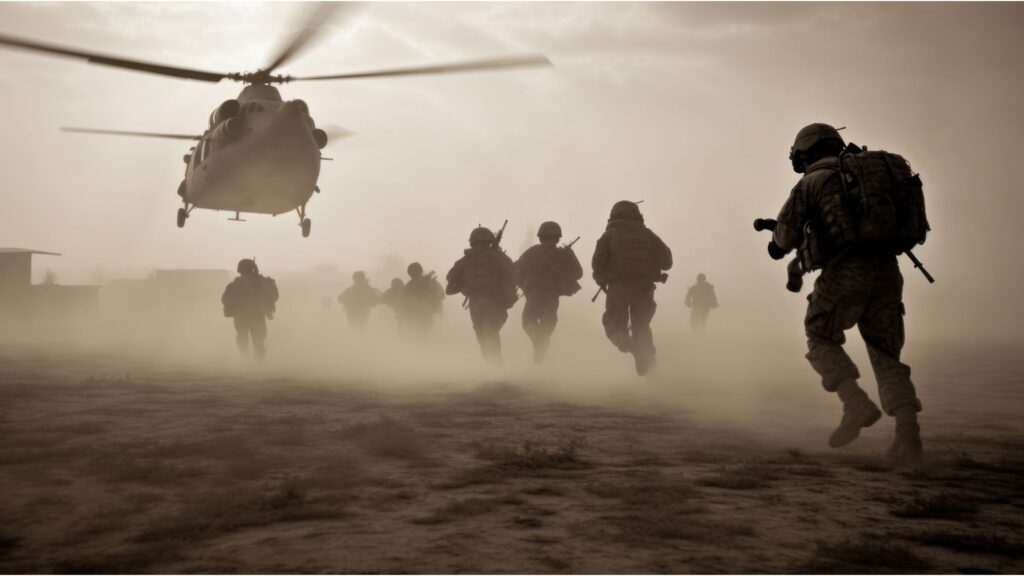
Overseas Deployment Lingo
| Term | Definition |
|---|---|
| Status of Forces Agreements (SOFA) | Diplomatic accords authorizing international military visitors |
| Foreign Military Sales (FMS) | Government-to-government defense articles and service exchanges |
| Military-to-Military Engagements | Officially arranged international training/drills |
| Main Operating Base (MOB) | Permanent overseas hub bases |
| Forward Operating Site (FOS) | Smaller expandable contingent foreign sites |
| Cooperative Security Locations (CSL) | Shared access points with minimal permanent presence |
Maintaining positive relations through exchanges builds interoperability helping multilateral crisis response while achieving peacetime influence through access, positioning, reinforcement routes, and regional stability shaping.
Conclusion
Military terminology offers windows into a vast parallel universe with elaborate languages, tools, machines, customs, objectives, dangers, triumphs, structures, and challenges opaque to external observers. Developing baseline comprehension lifts curtains revealing realities of service life ranging from exhilarating to mundane.
Ultimately, familiarity breeds empathy empowering civilians to properly translate military perspectives when formulating scores of policies profoundly affecting uniformed protectors. Simultaneously, fluency facilitates interagency collaboration critical for national security integration across diplomatic, informational, military, economic, technological, cultural, and other domains centralizing power into coherent strategy.
Hopefully this guide provided helpful orientation navigating introductory armed forces vocabulary as foundation for deeper exploration. Let us know if any areas require clarification or elaboration. Special thanks to all those standing watch enabling our freedoms - we appreciate your sacrifice.
Frequently Asked Questions
Q: How do branches divide key focus areas?
A: While some overlap occurs, each branch concentrates efforts toward core domains:
- Army: Ground warfare
- Navy: Maritime dominance
- Air Force: Aerial combat/transport
- Marine Corps: Amphibious flexible elite light infantry
- Coast Guard: Coastal security/safety
- Space Force: Orbital operations/support
Q: What is unique about Marine Corps culture?
A: The Marines constitute a tight knit expeditionary force emphasizing flexibility, self-reliance, and first-to-fight elitism. Their distinct ethos embraces austere environments and chaotic battles excelling through decentralized initiative.
Q: Who holds higher authority, a Major or a Sergeant Major?
A: While a Sergeant Major nominally only holds an enlisted rank, their role as highest ranking NCO accumulates tremendous informal influence through immense experience. However, commissioned officers legally outrank even senior most enlisted personnel in official capacities.
Q: What does a Petty Officer do in the Navy?
A: A Petty Officer performs technical and administrative roles as non-commissioned officers specializing in everything from missile systems to culinary services overseeing small teams of sailors aboard vessels and installations.
Q: Are civilian family members required to salute officers on bases?
A: No, saluting constitutes a formal show of respect between service members of differing ranks. While civilian attire clarifies exemption from protocol, protocol does dictate politely standing for colors ceremonies.
